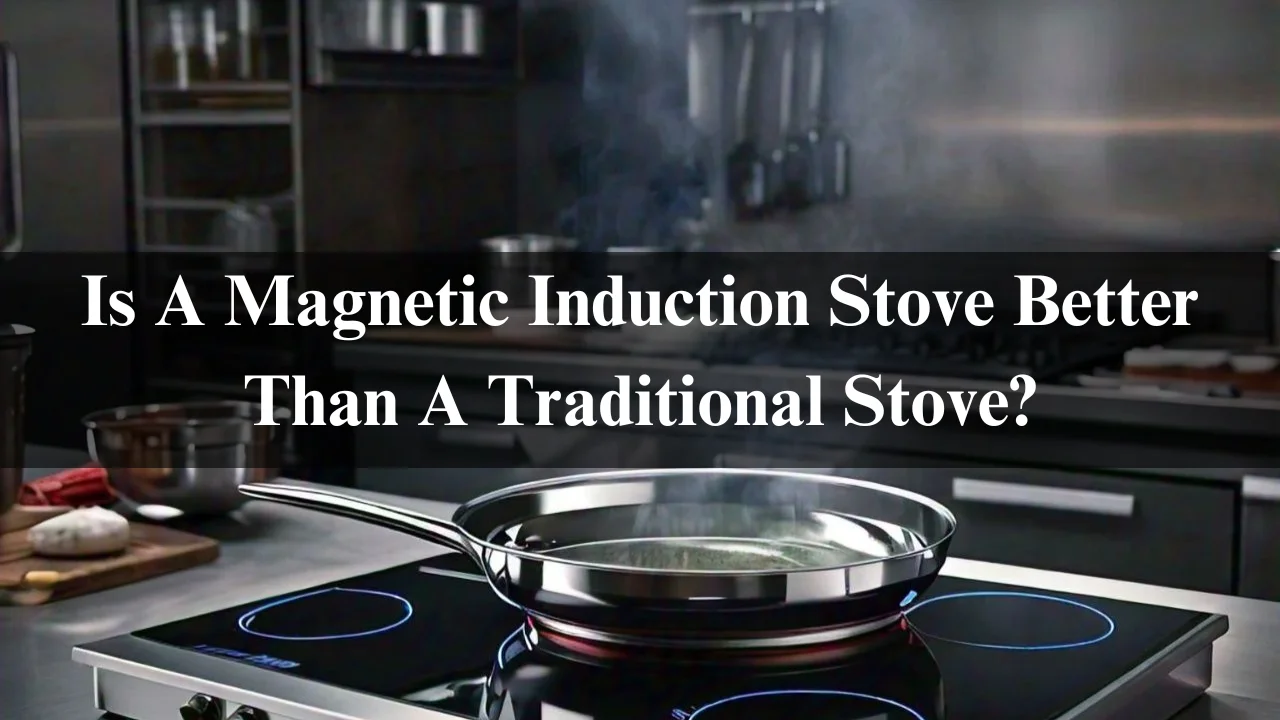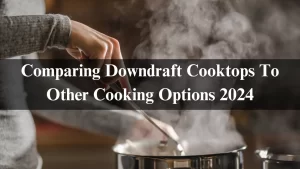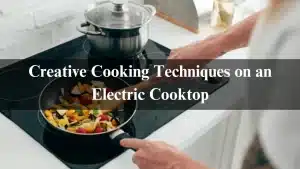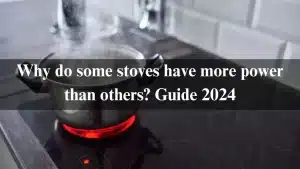Are you tired of waiting for your traditional stove to heat up? Or are you looking for a more efficient way to cook your meals? If so, the magnetic induction stove could be the game-changer you’ve been searching for. This innovative cooking technology is gaining popularity in kitchens around the world. But what sets it apart from conventional stoves?
According to my experienced I feel inducton stove working time is faster than the traditional stove to 20% to 30% because they give the direct heat to cookware therefore he take less time to heat up the cookware in the competition of traditional stoves.
In this article, we’ll explore the fascinating world of magnetic induction cooking and whether it truly outshines its traditional counterparts. Get ready to discover if this modern marvel can elevate your culinary experience!
Table of Contents
What Exactly Is a Magnetic Induction Stove?
A magnetic induction stove is a modern cooking appliance that uses electromagnetic fields to generate heat directly in the cookware. Unlike traditional stoves, which rely on gas flames or electric coils, an induction stove creates a magnetic field beneath the surface.
This means only compatible pots and pans of ferrous materials—like cast iron or stainless steel—can be used. When you place a pan on the cooktop, the magnetic field induces electrical currents, creating instant heat.
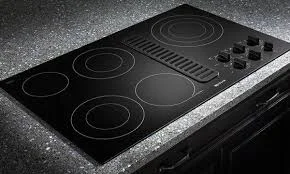
One notable feature is its precision. Chefs can easily control temperatures with just a touch. The surface around the cookware remains cool to the touch, making it safer and reducing energy waste.
How does a magnetic induction stove work?
A magnetic induction stove operates using electromagnetic energy. When a compatible pot or pan is placed on the cooktop, an electric current passes through coils beneath the surface.
This current generated a magnetic field. The magic happens when this field interacts with the metal in your cookware. It creates heat directly in the pot rather than heating the stovetop.
This method allows rapid and even cooking. Once you remove your cookware, the surface remains relatively cool to the touch, reducing burn risks and improving safety.
Another perk? Precise temperature control is at your fingertips. Adjusting settings leads to immediate changes in heat levels, making it ideal for delicate dishes requiring exact temperatures.
How does a traditional stove work?
A traditional stove uses direct heat generated by gas flames or electric coils. When you turn on a gas burner, the fuel ignites, producing an open flame that heats your cookware directly.
Electric stoves rely on metal coils or radiant elements beneath the cooktop surface. When activated, these elements glow red-hot and transfer heat to pots and pans placed above them. Compared to induction, this method can take longer to reach desired cooking temperatures.
Traditional stoves can have uneven heat distribution. For instance, if a pot is not fully covering the coil, some areas may remain cooler than others.
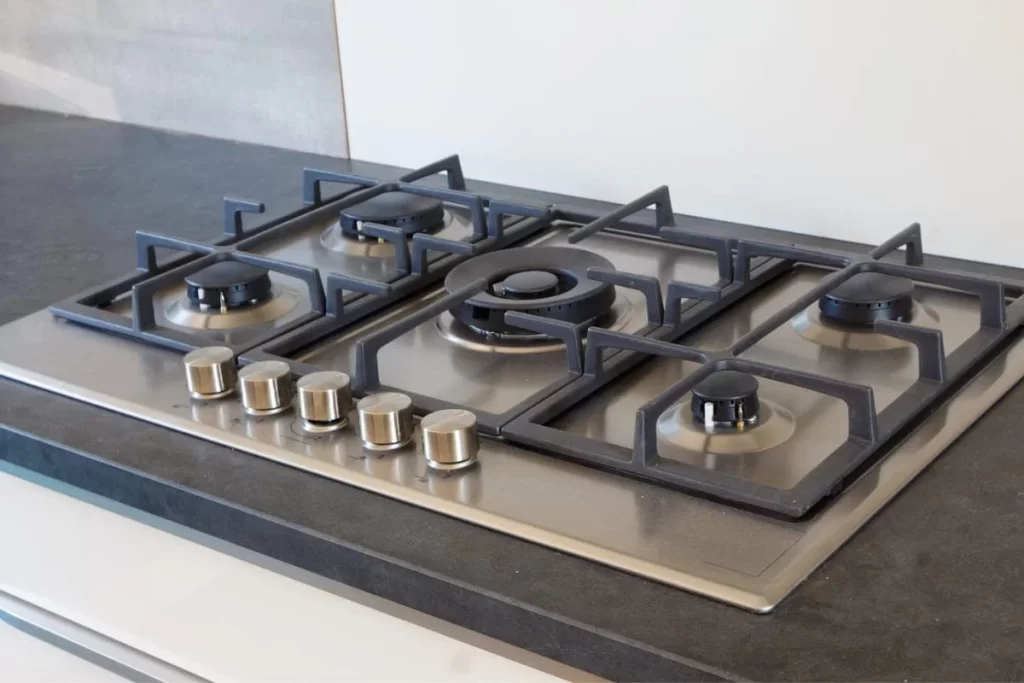
Temperature control also varies; adjusting the flame or dial affects how quickly food cooks but requires careful attention to avoid burning. Traditional stoves are familiar and widely used in homes worldwide due to their simplicity and effectiveness in various cooking tasks.
Comparison of energy efficiency between the Induction and traditional stoves
Regarding energy efficiency, magnetic induction stoves have the upper hand. They use electromagnetic fields to heat pots and pans directly. This method minimizes heat loss, ensuring that nearly all the energy is utilized for cooking.
In contrast, traditional stoves rely on gas flames or electric coils that generate heat around the cookware. A significant amount of energy escapes into the surrounding air, making them less efficient overall.
Studies suggest that induction cooking can be up to 90% efficient, while traditional methods often hover around 70%. This difference impacts your utility bills and how quickly you can cook meals.
For eco-conscious consumers, opting for a magnetic induction stove means less wasted energy and a smaller carbon footprint over time. The choice between these two types boils down to efficiency in both performance and environmental impact.
Cooking performance: speed, precision, and control
Cooking performance is critical when choosing between a magnetic induction stove and a traditional one. Induction stoves shine in speed, heating pots and pans almost instantly. This makes them perfect for those who are often pressed for time.
Precision is another significant advantage of induction cooking. The temperature control allows you to adjust heat levels quickly without the lag commonly associated with gas or electric burners. You can simmer sauces gently or sear meats at high temperatures effortlessly.
Moreover, the level of control provided by an induction stove enhances your cooking experience. Whether you’re melting chocolate or boiling water, you have immediate feedback.
Traditional stoves may require more patience as they take longer to warm up and cool down, which can lead to overcooked meals if you’re not careful. In contrast, every adjustment feels instant and intuitive with an induction stove.
Is a Magnetic Induction Stove Safer Than a Traditional Stove?
Safety features play a crucial role when choosing between a magnetic induction stove and a traditional stove.
Magnetic induction stoves shine with their cool-to-the-touch surfaces. This minimizes the risk of burns since the heat is generated directly in the cookware. They often have automatic shut-off functions that activate when no pan is detected or after extended use.
On the other hand, traditional stoves present different safety challenges. Open flames can pose fire hazards if not monitored closely, and gas leaks are another serious concern requiring vigilant maintenance and detection systems.
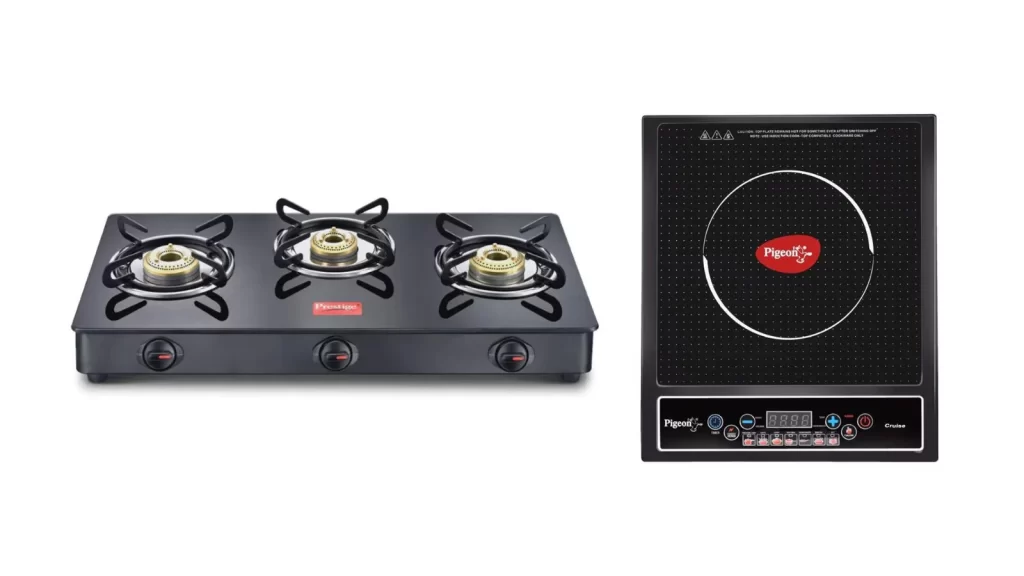
Both types usually feature control locks to prevent accidental activation, which is especially important in households with children.
Choosing wisely means considering how these features fit your kitchen dynamics and lifestyle preferences while ensuring peace of mind during cooking sessions.
What are the maintenance and cleaning requirements for both stoves?
Magnetic induction stoves are relatively low-maintenance. Their smooth, flat surfaces make cleaning a breeze. A simple wipe with a damp cloth after cooking is often enough to keep them looking pristine. Any spills or splatters won’t burn onto the surface due to the lack of direct heat.
Traditional stoves, on the other hand, require more effort. Gas burners can accumulate grease and food residues that need scrubbing. The grates and burner caps may also need soaking to remove stubborn stains or burnt-on food.
For electric coil stoves, cleaning involves lifting the coils for thorough access underneath them. This can be a bit cumbersome but is necessary for optimal performance.
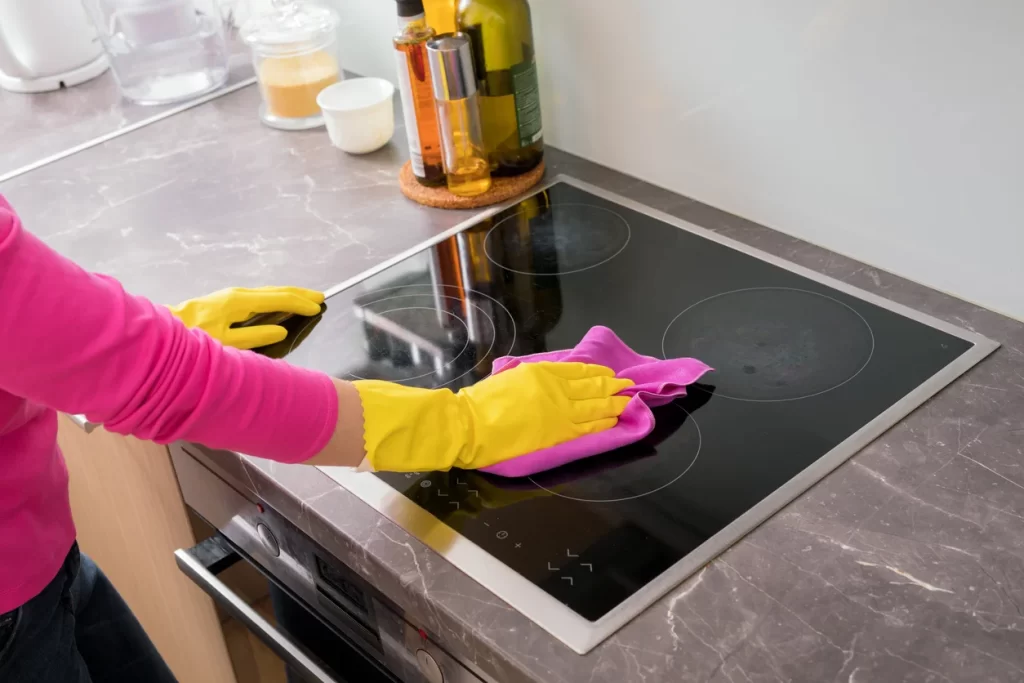
Both types benefit from regular maintenance checks to ensure they function safely and efficiently. Overall, magnetic induction stoves are easier to maintain than traditional options.
Can You Save Money with a Magnetic Induction Stove?
The initial cost of a magnetic induction stove may be higher than that of a traditional stove. Prices can vary widely depending on features and brand. Quality induction cooktops often range from $100 to over $1,500.
However, induction stoves offer noteworthy long-term savings. They use less energy and heat up faster than their traditional counterparts, which translates into lower utility bills over time.
In contrast, while traditional electric or gas stoves might seem cheaper initially, they can consume more energy during cooking sessions. Plus, gas prices fluctuate frequently.
If you cook regularly, investing in a magnetic induction stove could lead to significant savings. The combination of reduced energy consumption and faster cooking times makes it an appealing choice for many households looking to save money in the long run.
Which Stove Is Better for the Environment—Induction or Traditional?
Magnetic induction stoves present an eco-friendly advantage. They operate using electricity, which can be sourced from renewable energy like solar or wind power. This transition reduces reliance on fossil fuels and lowers greenhouse gas emissions.
On the other hand, traditional stoves often rely on gas or electric coils. Gas stoves emit carbon dioxide during combustion, contributing to air pollution and climate change. Electric coil models may draw energy from non-renewable sources, further negatively impacting the environment.
Moreover, induction cooking is more efficient in heat transfer. Less wasted energy means reduced overall consumption. With a focus on efficiency and cleaner energy options, magnetic induction stoves align better with sustainable living goals.
Ultimately, choosing between these two types of stoves can reflect one’s commitment to environmental stewardship and long-term sustainability practices in the kitchen.
User experience: pros and cons from real users
Users have mixed feelings about magnetic induction stoves. Many appreciate the instant heat and precise temperature control. They find cooking faster, which is a win for busy households.
On the downside, some users mention that not all cookware works with these stoves. This can be frustrating if you love your favorite pots and pans.
Noise is another point of contention. Some models produce humming sounds when in use, which can be distracting during meal prep.
Safety features are a plus for many families. The cool surface reduces burn risks, making it appealing to parents with young children.

However, installation costs may deter potential buyers. For those on a budget, traditional stoves might seem more accessible.
In short, while many enjoy the modern feel and efficiency of magnetic induction stoves, others weigh their limitations carefully before making a switch.
Which one is better for you, an induction or magnetic stove?
Choosing between a magnetic induction stove and a traditional stove ultimately depends on your cooking habits, preferences, and lifestyle. If you value energy efficiency and precise temperature control, a magnetic induction stove might be more suitable. Its rapid heating capabilities make it ideal for busy kitchens where time is of the essence.
On the other hand, if you prefer versatility in cookware and enjoy classic cooking methods, a traditional stove could be your best bet. It offers a familiarity that many home cooks appreciate while providing reliable heat.
Safety features should also be considered; induction stoves tend to have less risk of burns since they only heat when compatible cookware is present. Maintenance requirements are also generally lower with induction models due to their smooth surfaces.
Cost-wise, although magnetic induction stoves may require a higher initial investment, the energy savings over time can offset this expenditure. Additionally, environmental impacts should be considered; opting for an energy-efficient model often contributes positively to sustainability efforts.
Ultimately, reflect on what matters most to you in the kitchen—whether it’s speed or tradition—and choose accordingly. Your culinary experience should enhance meals and how you feel about daily cooking.
Is Induction Cooking Faster Than Traditional Stoves?
Induction cooking is often praised for its speed. The technology heats pots and pans directly through electromagnetic energy, resulting in rapid temperature changes.
In contrast, traditional stoves use gas flames or electric coils to transfer heat. This process is less efficient, leading to longer wait times for boiling water or sautéing vegetables.
A study showed that induction cooktops can boil water almost twice as fast as their conventional counterparts. Chefs appreciate this instant response when adjusting heat levels during cooking.
The difference becomes even more pronounced with larger meals. Induction stoves maintain consistent temperatures without the usual lag found in traditional systems.
Induction cooking offers a notable advantage over conventional options for those who value efficiency in the kitchen. Speed isn’t just about convenience; it can also enhance your culinary experience.
Detailed comparison of cooking times:
| Cooking Method | Time to Boil 1 Liter of Water |
| Gas Stove | 8-10 minutes |
| Electric Coil Stove | 10-12 minutes |
| Induction Cooktop | 4-5 minutes |
Does a Magnetic Induction Stove Use More Electricity?
Many people wonder if a magnetic induction stove uses more electricity than its traditional counterparts when considering energy consumption. The answer isn’t as straightforward as one might think.
Magnetic induction stoves are known for their efficiency. They heat cookware directly through electromagnetic energy, which means less heat is lost to the surrounding environment. This direct heating method speeds up cooking times and reduces overall energy usage during meal preparation.
In contrast, traditional gas or electric stoves release significant amounts of heat into the air around them. This inefficiency can lead to longer cooking times and increased energy costs. While gas may seem cheaper per unit than electricity, the total cost of using a magnetic induction stove could be lower due to its efficiency in converting energy into usable heat.
While both stoves have their merits regarding power usage and cost-effectiveness, those seeking an eco-friendly option with quick cooking times likely find that a magnetic induction stove offers compelling advantages worth exploring further.
Related Articles:
Why Do Induction Stoves Make Those Annoying Clicks? 2024
Why Do Induction Stoves Work Poorly In Low-Power Settings? Info 2024
Why Is My Induction Stove Giving An Electric Shock? Latest Info 2024
What Is The Biggest Problem With Induction Cooktops? 2024
Conclusion
In conclusion, a magnetic induction stove offers several advantages over traditional stoves, including faster cooking times, energy efficiency, and precise temperature control. Its safety features, such as cool surfaces and automatic shut-off, make it an attractive choice for families. While the initial investment may be higher, long-term energy bill savings and eco-friendly benefits make induction cooking a smart option for many households. However, traditional stoves remain a reliable choice for those who value familiar cooking methods and prefer versatility in cookware. Ultimately, your choice depends on your lifestyle, cooking habits, and priorities in the kitchen.
FAQs
Do induction stoves use more electricity than traditional stoves?
No, induction stoves are more energy-efficient and use less electricity because they cook faster and transfer heat more effectively.
Can I use any pan on an induction stove?
No, you need magnetic cookware like cast iron or stainless steel.
Is induction cooking better for the environment?
Yes, induction stoves use less energy and don’t release harmful emissions like gas stoves.
Are induction stoves safer than gas or electric stoves?
Yes, induction stoves have a cooler surface and safety features like auto-shutoff, making them much safer for homes with children.

